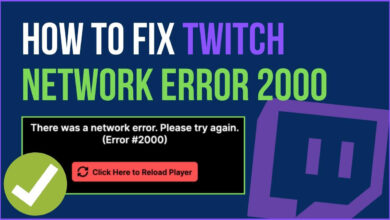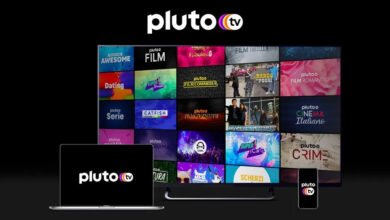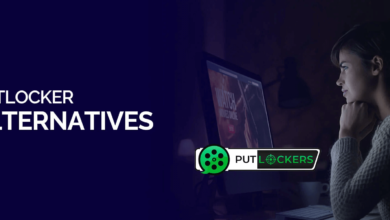The Difference Between IoT and IIoT – You Need to Know

As we enter a new decade, smart devices in hand, in our cars, and installed in our homes, we have a pretty good idea of what IoT means — but what about IIoT? The following article will help clarify the distinction and show you how IIoT is relevant to you.
Internet of things (IoT) products and software can be found everywhere. IoT helps increase connectivity between smart devices and learns patterns from data, helping you accomplish everyday tasks easily and safely. In this world of instant connectivity, IoT devices are only becoming more common.
Because the world of IoT is expanding so rapidly, so are the terms that describe its different aspects, such as the IIoT — or the industrial internet of things. Depending on your industry, you could start seeing IIoT devices and software used more frequently.
Here’s how to distinguish IoT and IIoT:
The IoT connects the smart devices in your life in order to improve workflows and daily experiences in a healthy, safe, and capable way.
IIoT is a division of IoT that is industry-specific and focuses on promoting efficiency, health, and safety, rather than simply improving daily experiences. IIoT helps both individual people and digital networks.
Although IIoT is its own category under IoT, IIoT is industry-specific and can offer more in-depth uses and applications than regular IoT can.
More Technical
IoT covers all devices that make life easier and increase connectivity, from smartwatches and GPS systems to home security and cell phones. IIoT devices, on the other hand, are used in highly technical fields and thus need to place more of a focus on technicality, precision, and reliability for certain tasks.
For example, when IIoT comes into play in the health care industry, professionals rely on these devices to offer cost savings, streamline important services, and bring benefits such as visibility, communication, increased innovation, and increased productivity.
The health care industry is already using IIoT devices to monitor and manage remote operations, and with this assistance the efficiency of remote health care is expected to increase significantly by 2023. Health care facilities depend on IIoT, and will continue to depend on IIoT in the future to support their operations on a highly secure and technical level.
More Scalable
The network of interconnected IIoT devices grows more detailed and complex the more facilities utilize it — adding devices as needed. Scaling is the only way to efficiently support this extensive amount of IIoT devices. Although scalability is an important aspect of regular IoT networks, it is an absolutely essential component for IIoT.
The manufacturing industry is one example of an industry that depends on the scalability of IIoT. New sensors and devices are constantly added to increase output and improve performance, which means that any bump in the road could threaten to decrease output and disrupt workflow. This in turn can increase expenses and make things more difficult, which is certainly not the goal of IIoT devices.
These types of companies want to increase efficiency and productivity, which means they will rely more and more on scalable IIoT networks, causing IIoT sensors to outpace the scalability of IoT devices.
Higher Degree of Practical Application
One of the main differences between IoT and IIoT is the degree of practical application. While IoT serves a large amount of general devices, such as phones, security software, and printers, IIoT deals with more industry-specific, practical applications. IoT devices and software can afford to be less precise because their tasks are less technical.
IIoT devices are more sophisticated than IoT devices because of their specificity and emphasis on particular roles. Precision in all things — such as locations, sensors, and analytics — is critical with IIoT. The highly technical nature of IIoT devices means that it can take thousands of IIoT devices to create an ideal, functioning network.
More Expensive
The highly technical abilities of IIoT come with a higher cost. IIoT devices are more valuable and can therefore be more expensive. These networks can rapidly increase in cost since certain industries require so many interconnected devices.
Although the cost is steep, this hasn’t slowed down the field’s growth. In fact, the value of the global IIoT market is projected to see a surge over the next five years according to a Million Insights report. These devices can be looked at as an investment, saving money down the road, but only if facilities actively protect their IIoT network so that it can continue to do its job.
Higher Exposure Risk
As we’ve stated above, IIoT networks are more detailed and complex than IoT networks, partly because of the sheer number of connected devices. This increases the possibility of breaches in cyber security, which could threaten the entire network if the attacks are successful.
In the health care industry, almost 90 percent of organizations expect to adopt IoT systems by 2021. Even so, approximately the same amount have already experienced an IoT-related security violation. IoT and IIoT devices need reliable security in order to prevent occurrences that could cause devastating financial losses, or threats posed to the health and safety of those who depend on the network.
Fortunately, the facilities that rely on IIoT can also rely on some top-notch security systems designed to handle elaborate, interconnected networks. One network security solution comes in the form of Tempered Networks’ Airwall™, which is adept at providing the security needed for the constantly changing needs of a scaling IIoT network.
Unlike most modern security solutions, which merely provide systems administrators with visibility into their network, the Airwall™ makes your entire network invisible, cloaking every IIoT endpoint and protecting from external threats and lateral movement at any scale.
With this modern technology, IIoT industries are able to make the most of IIoT solutions without incurring any of the security-related risks.









